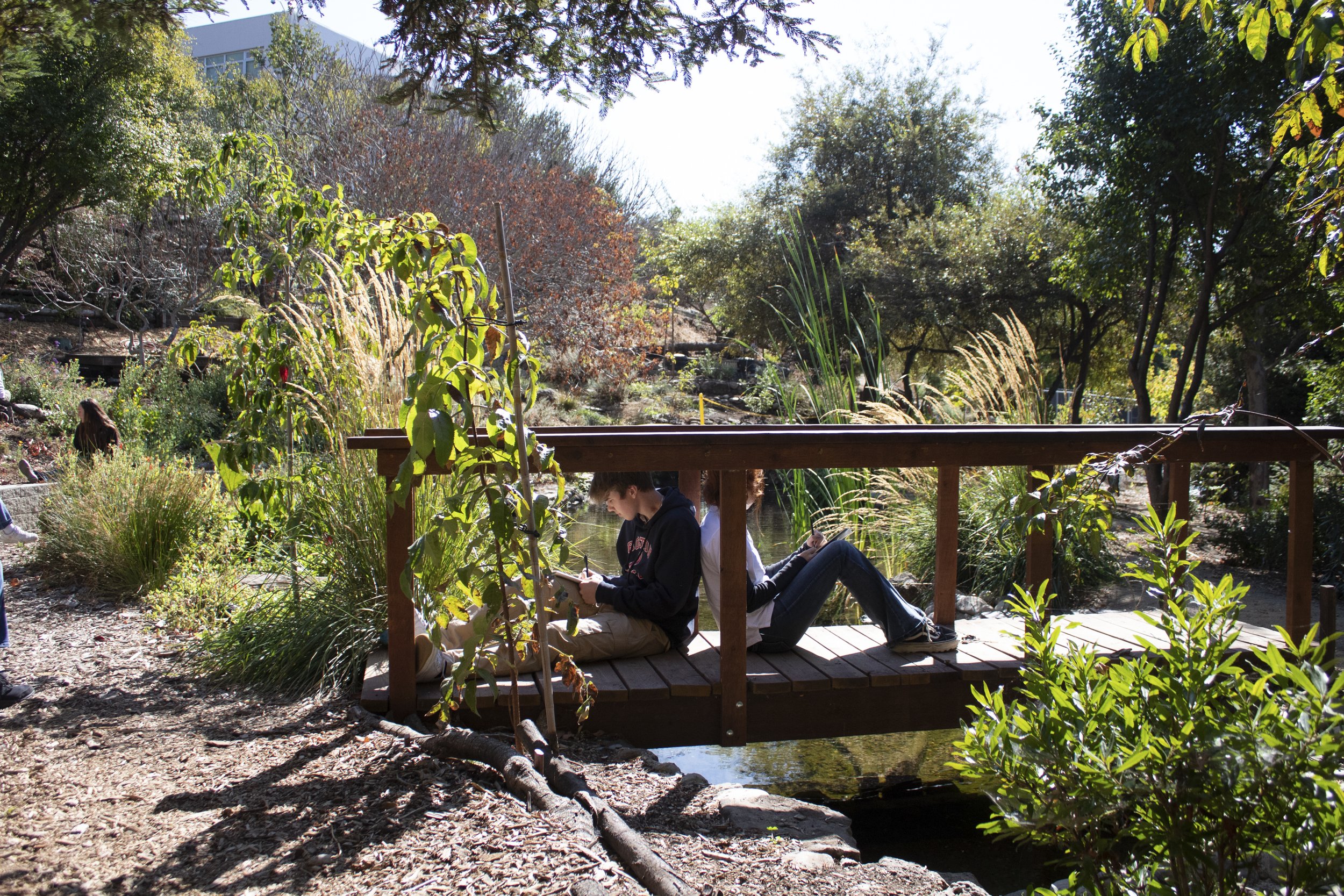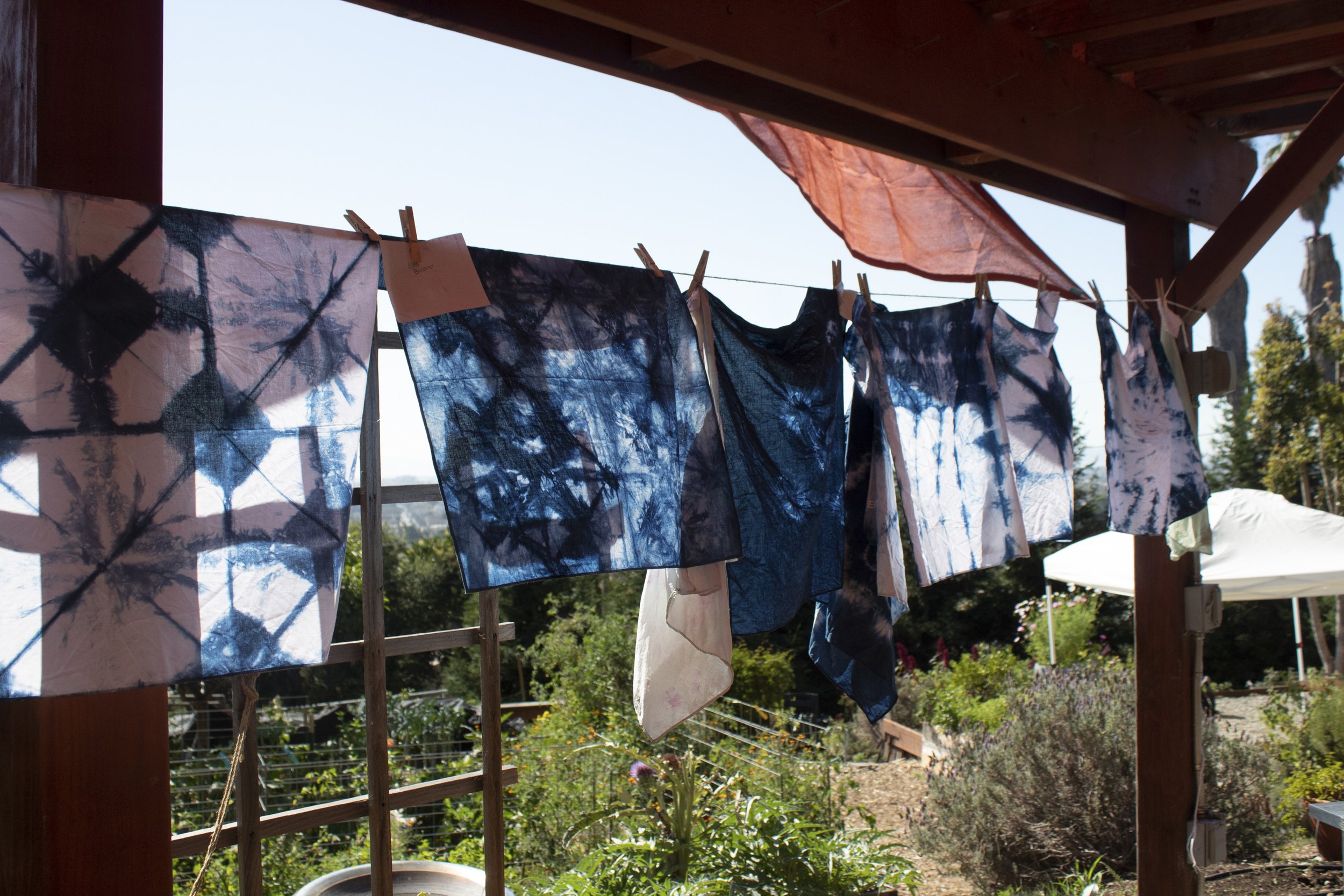public art at bishop o’dowd high school
2020-2022
Atlas (After Anna) is a large-scale public art installation at Bishop O’dowd High School in Oakland, California. The artwork – installed on the facade of the Center for Environment Studies – consists of multiple abstract maps that reflect the school’s unique location amidst the Bay Area’s rich natural systems. The artwork highlights ways that human and natural systems are entangled. It offers a spiritual, scientific, and artistic take on map-making; one that draws upon the mission of the Living Lab school garden and Center for Environmental Studies as a place for multi-disciplinary learning, contemplation, and kinship.
educational engagement
Fall 2022
Developed in collaboration with Isabel Rodriguez-Vega, Sustainability Programs Manager, and Michael Downs, Director of Justice and Kinship, this series of workshops guided students through interdisciplinary learning in the Living Lab school garden, exploring how scientific study and artistic expression can foster care, curiosity, and community.
Our guiding question was: What can creative practices, close looking, and co-production teach us about caring for our environment, honoring the land and its histories (both human and geologic), cultivating community care, and working towards social and environmental justice?
Blind Contour Drawing
Generally, field sketching exercises cultivate strategies for recording scientific research and documenting experience. We use this tool to filter information through ourselves, to interpret information about what surrounds us - visually and also emotionally. This practice helps all of us cement features to memory and more fully understand complex visual information. Specifically, blind contour drawing workshops emphasized the value of drawing as a way to foster close looking and deep observation, and to better record information and form of objects - from plants to rock formations to broad landscapes.
For this workshop, students learned the blind contour method to draw plants and scenes in the garden. After a short lesson about native plants from the garden from Annie Prutzman, Naturalist Educator, we discussed why drawing is important for scientific study. Then students practiced blind contours, working up from shorter times and simpler subjects, to longer times and more complicated scenes. They added color and value to their drawings to emphasize certain features, and practiced the way that expressive mark-making can offer new information about familiar surroundings.
Indigo Dyeing
Invented by Horace-Bénédict de Saussure and Alexander von Humboldt in the 18th century, the cyanometer is a circular instrument of gradient squares of dyed paper, used for measuring the blueness of the sky. The cyanometer is a beautiful example of a simple object that deepens our connection to abstract information in order to gain a sense of our place in the world.
For this workshop, Hannah and Isabel harvested fresh indigo from the garden for students to use for dyeing fabric. After demos led by Isabel and a short lesson from Annie on the indigo plant, students worked together to experiment with salt dyeing methods (natural indigo leaves) vat dyeing methods (synthetic kit) to create varying hues and saturations of natural blue on silk and cotton bandanas. Together, the different shades of each bandana created a collective “cyanometer” – a collaborative and creative interpretation of a scientific tool used to deepen connection to each other and the land and community around us.
Cyanotype Printmaking
The cyanotype process was first pioneered by Anna Atkins, a botanist, in the 19th century (the installation is a nod to her as the first known female photographer, integrating science and art in her work). For these workshops, students created cyanotype prints on paper using cuttings from the garden. After learning about Anna Atkins, the cyanotype process, and viewing Hannah’s original cyanotype prints with cuttings of those plants from the garden, students collected materials from the surrounding garden (ie. plant cuttings, dirt, gardening tools, person items) and use them to create sun prints on paper. These photographs became records of time, place, and human interaction with their surrounding environment.







































